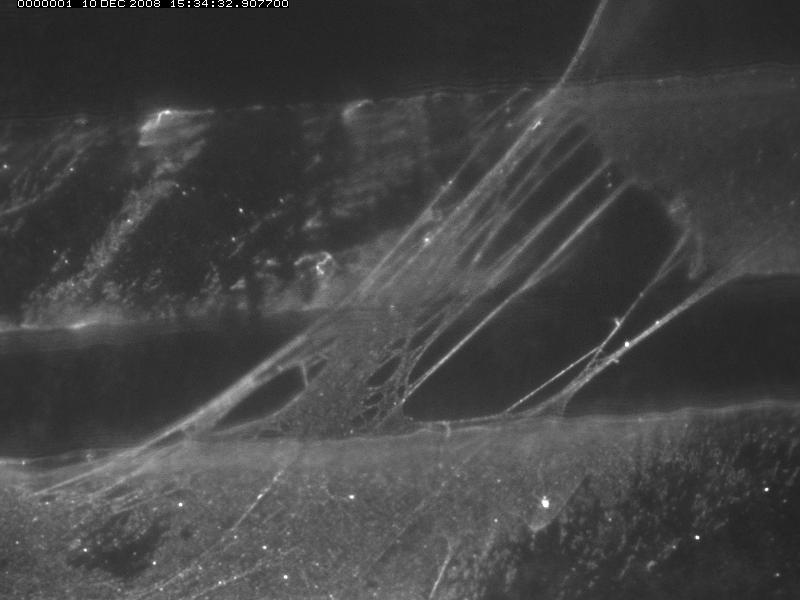Fibrin Sheets


This is a movie of a TEM simulation of curved single wall nanotube being moved over an amorphous carbon background. It runs at 12 fps.
This is a longer version of the same movie. Both movies were made using a graphics-hardware-accelerated simulator produced by David Borland as part of our accelerated microscope simulation and analysis work. The curved nanotube shown in the video is moved by hand using a 6-degree-of-freedom manipulation device while the background thickness is adjusted. The combined background + tube simulation is run at 12 frames/second.
This clip starts with a bead being positioned near a nanorod using a laser trap. Then, an orbit is applied to the rod using the magnets of the 3DFM and it starts to beat. A flow in the CCW direction is created, and the bead can be seen to flow around the rod. Then, the beat frequency is doubled, and the bead’s orbital radius increases.
In this clip, we start with a NanoRod flat on the substrate, and are able to use the magnets to get the rod to stand up vertically on the coverslip. We then apply an orbitting voltage, and watch the rod’s tip move in a square-like orbit.